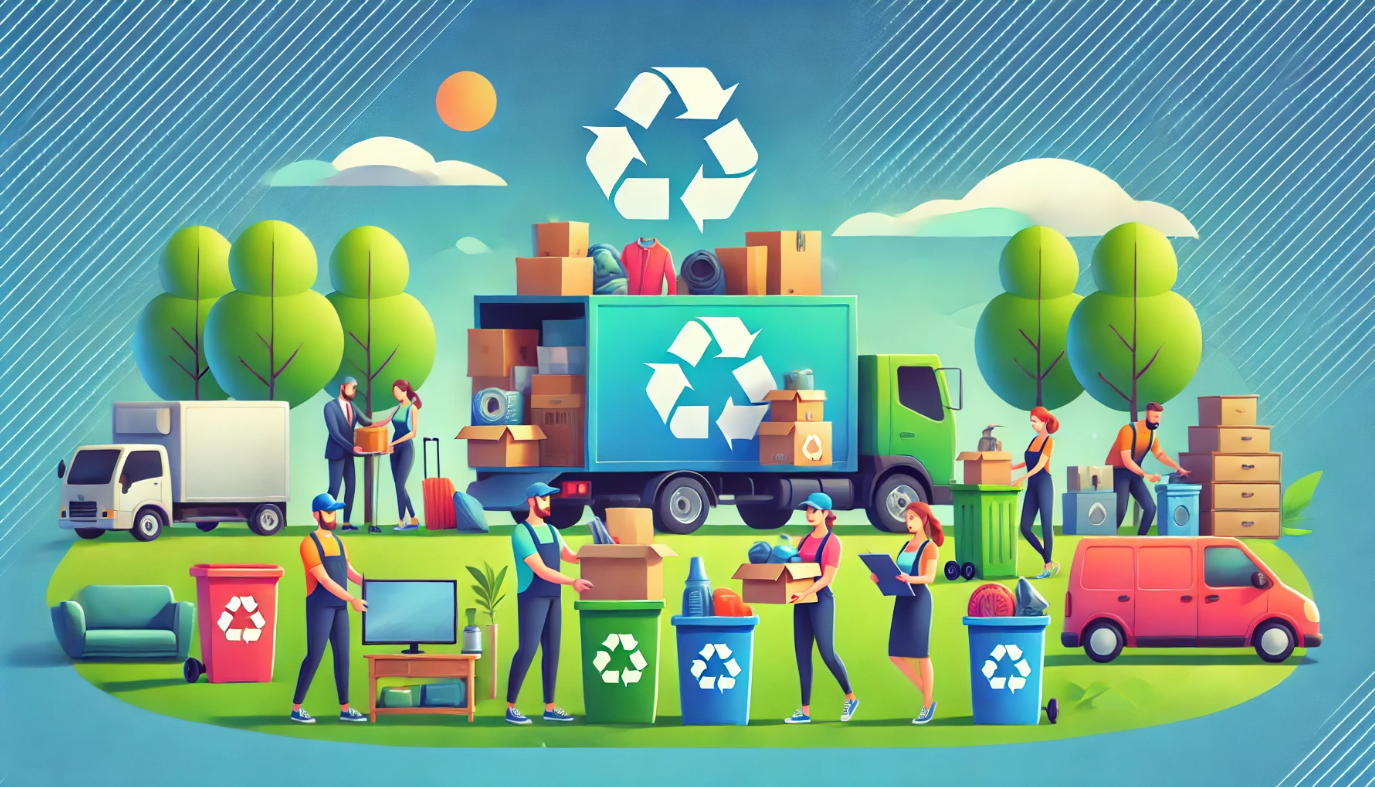
Recycling Unwanted Items: A Practical Guide to Sustainable Disposal
Recycling unwanted items is one of the best ways to clear clutter responsibly. Whether it’s old furniture, broken electronics, or worn-out clothes, proper disposal ensures that materials get reused or recycled, reducing environmental impact. In this guide, we’ll explore different methods for recycling common household items, tips for finding local recycling centers, and how eco-conscious choices can make a difference.
Why Recycling Unwanted Items is Important
Recycling unwanted items goes beyond keeping your space tidy. It benefits the environment and supports a sustainable lifestyle. Here’s why recycling is essential:
- Reduces Landfill Waste: Recycling decreases the amount of waste going to landfills, conserving space and reducing pollution.
- Conserves Natural Resources: Recycled materials reduce the need for new raw materials, preserving resources like water, wood, and minerals.
- Cuts Down on Pollution: Recycling limits the energy used to produce new products, which lowers greenhouse gas emissions.
- Supports Community Organizations: Many recycled or repurposed items go to charities and community centers, helping those in need.
- Promotes Mindful Consumption: Recycling encourages more conscious choices about what we buy, use, and throw away.
How to Find Recycling Centers for Specific Items
Recycling specific items often requires locating the right facility. Here’s how to find recycling centers suited to each type of item:
- Electronics (E-Waste) Centers: Search for certified e-waste centers in your area. Many electronics stores and community centers also host e-waste recycling events.
- Furniture Donation Centers: Thrift stores and nonprofits like Goodwill and the Salvation Army accept gently used furniture. For recycling, check with local waste management providers.
- Appliance Recycling Programs: Some retailers offer “take-back” programs, where they’ll collect and recycle old appliances. Local waste services may also have drop-off days.
- Textile Recycling Bins: Look for clothing donation bins at schools, shopping centers, and community centers. Some brands also offer recycling for old clothes.
- Plastic Drop-Off Locations: Many grocery stores accept plastic bags and wrap. For harder plastics, research local recycling centers that accept more types.
Common Household Items to Recycle
Different items require specific disposal and recycling methods. Here’s a breakdown of common household items and
eco-friendly recycling options:
| Item Type | Examples | Recycling Method |
|---|---|---|
| Electronics (E-Waste) | Phones, computers, TVs | E-waste recycling centers |
| Furniture | Tables, chairs, sofas | Donation centers, recycling facilities |
| Appliances | Refrigerators, ovens, microwaves | Appliance recycling programs |
| Textiles | Clothing, linens, towels | Textile recycling, donation bins |
| Plastics & Packaging | Bottles, containers, packaging | Local recycling centers, specific plastic drop-offs |
- Electronics: Items like computers, phones, and TVs contain harmful chemicals. Many e-waste centers ensure safe recycling of these materials.
- Furniture: Usable furniture can often be donated to thrift stores, while damaged items may be recyclable at designated centers.
- Appliances: Larger appliances are typically accepted by recycling centers or retailers offering appliance disposal programs.
- Textiles: Clothing and fabric can often be donated or taken to textile recycling facilities.
- Plastics: Plastic containers and packaging can go to local recycling programs, though it’s essential to check which types are accepted.
Creative Ways to Repurpose and Upcycle
Before throwing items away, consider ways to repurpose or upcycle them. Upcycling gives items a new life, reducing waste while creating something unique. Here are some ideas:
- Furniture Flip: Sand down and repaint old furniture to give it a new look. Old tables and chairs are easy to refresh with a bit of creativity.
- DIY Storage Solutions: Turn jars, containers, or crates into storage organizers for bathrooms, kitchens, or offices.
- Garden Planters: Use old pots, cans, and even furniture like dressers or drawers as planters, bringing character to your garden.
- Clothing Repurpose: Turn old t-shirts into cleaning rags, or repurpose fabric scraps for DIY sewing projects like pillows or tote bags.
- Pallet Projects: Wooden pallets can be turned into shelves, outdoor seating, or even bed frames with minimal tools and creativity.
Frequently Asked Questions (FAQ)
Q: How can I recycle electronics safely?
Electronics should be taken to certified e-waste recycling centers. Many cities have designated drop-off days, and some retailers offer recycling programs for electronics.
Q: Are all plastics recyclable?
Not all plastics are accepted in curbside programs. Check local guidelines, as some facilities only accept specific types like #1 (PET) or #2 (HDPE) plastics.
Q: Can I recycle old appliances?
Yes, many recycling programs accept appliances. Some retailers also offer disposal services when you purchase a new appliance.
Q: What should I do with worn-out clothing?
Clothing that can’t be donated may still be recycled through textile recycling programs. Many areas have bins specifically for textile recycling.
Q: Do all thrift stores accept used furniture?
Not all thrift stores take furniture, and some may have specific guidelines for items they accept. Call ahead to confirm before donating large items.
